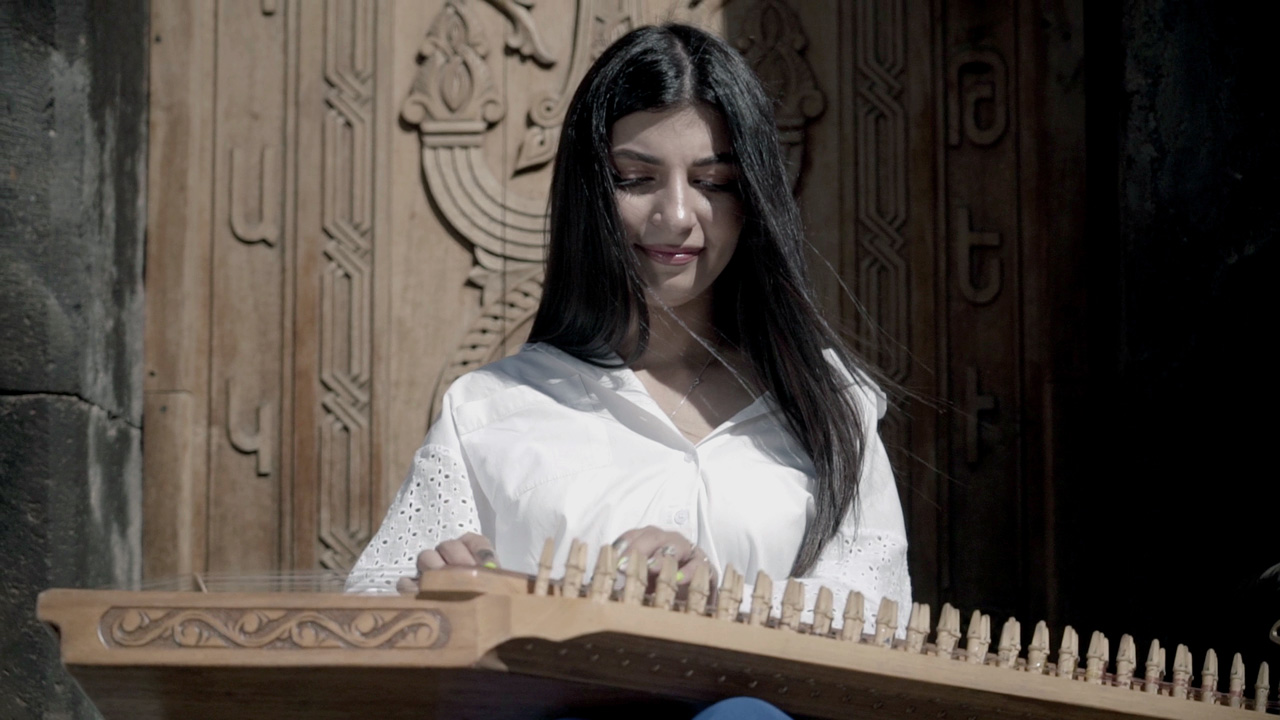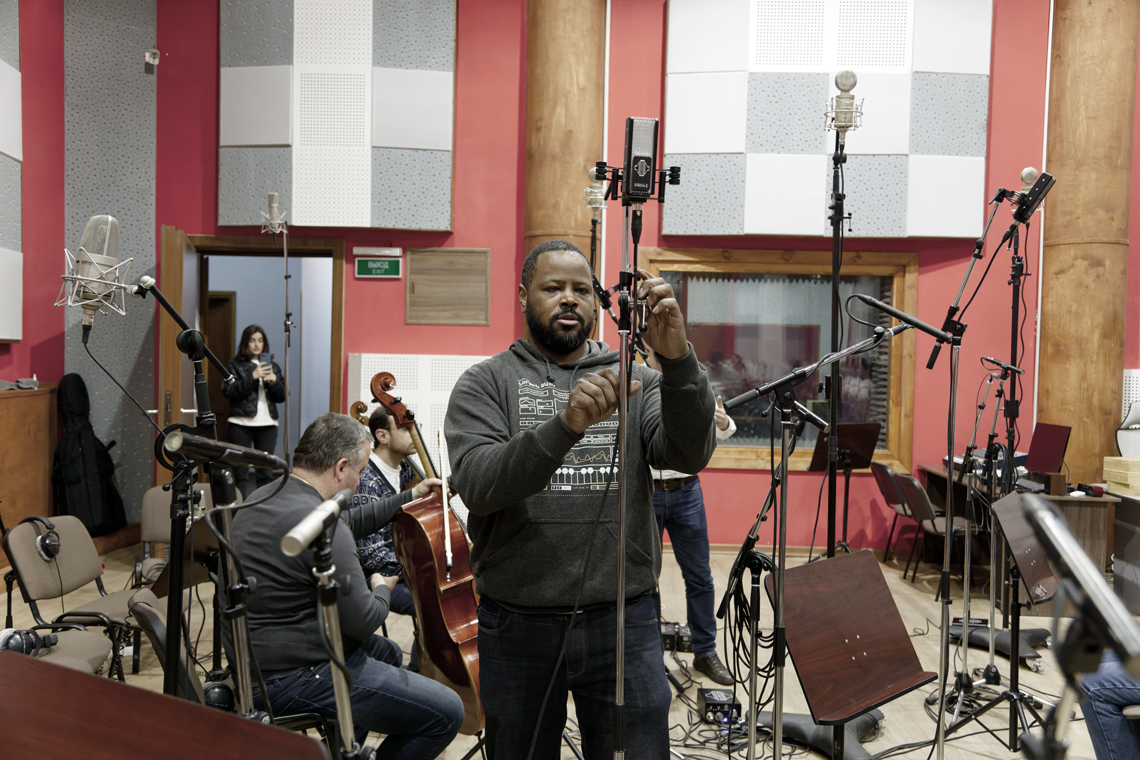The Qanun: An Instrument of Mystique and Romance
October 30, 2023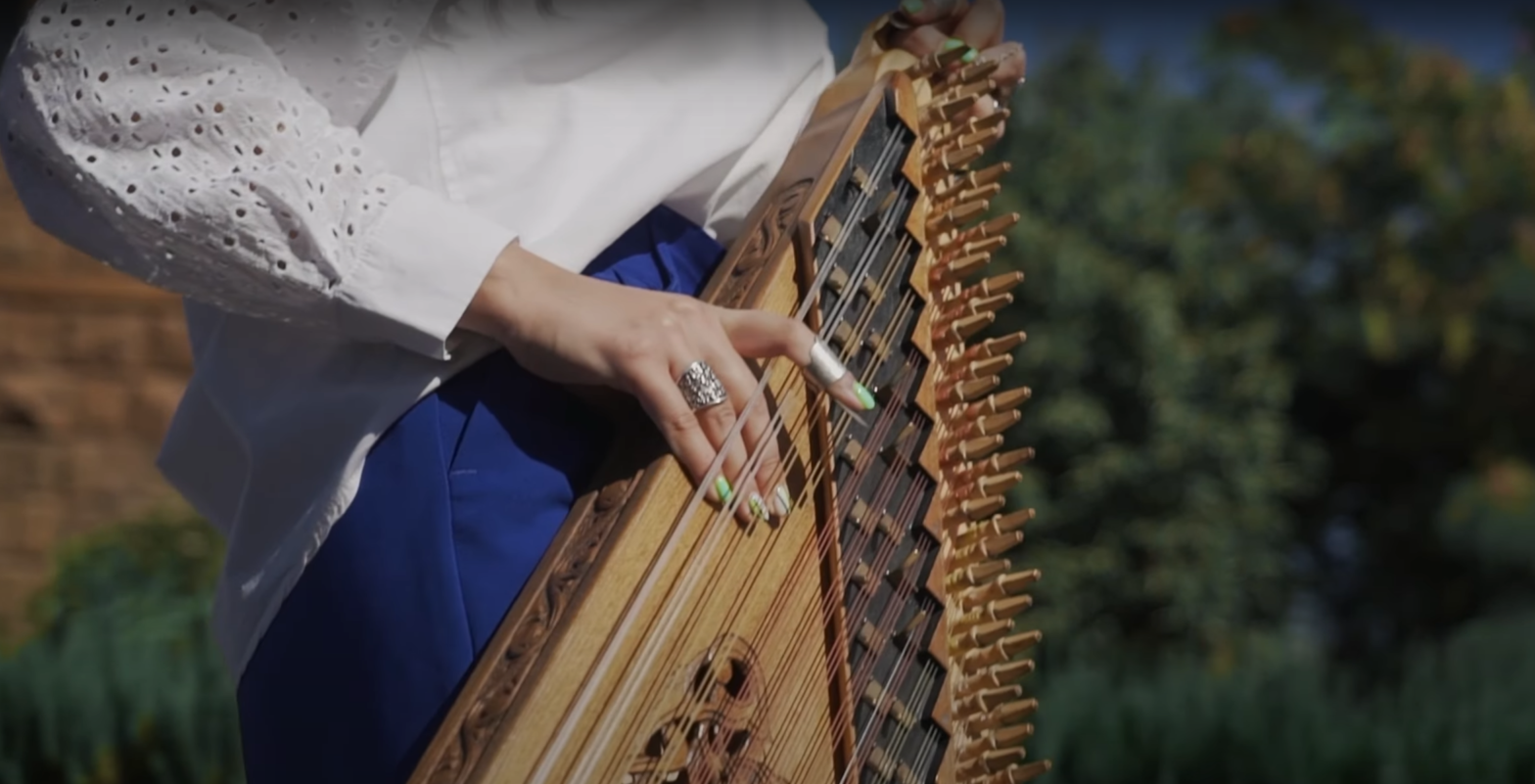
The Qanun, the first instrument that our co-founder, Olajide Paris, ever recorded in Armenia, has a unique sound and a rich cultural history that is unmatched in the world of music. During a trip in 2018, Olajide stumbled upon this enchanting instrument and fell in love with both it and the country. It proved to be the perfect fit for that project, where he was seeking out the most authentic-sounding instruments for a brand. The Qanun had the perfect, most interesting sound.
“Even before I started Triple A, I always knew that I wanted to do a library focused on the Qanun alone,” Olajide says.
It is then no surprise that, after the company’s founding, the Qanun was the first instrument that Olajide recorded and released – again.
But what is the Qanun?
The origins are unclear. We know they’ve been around a long time. Ancient Greek historians mentioned people using instruments like it in Assyrian courts. To find out more, we spoke with Tsovinar Hovhannisyan, a professor at Yerevan State Conservatory. Tsovinar is one of the first female master Qanun players in Armenia. “An Armenian historian mentions Nazenik, a singer and dancer for hire in the second century AD said to ‘sing with her hands’”, she tells us. Fast forward a few millennia and the word “qanun” becomes a bit more common, as it was an instrument in the mainstream during the Abbasid era in the 10th century.
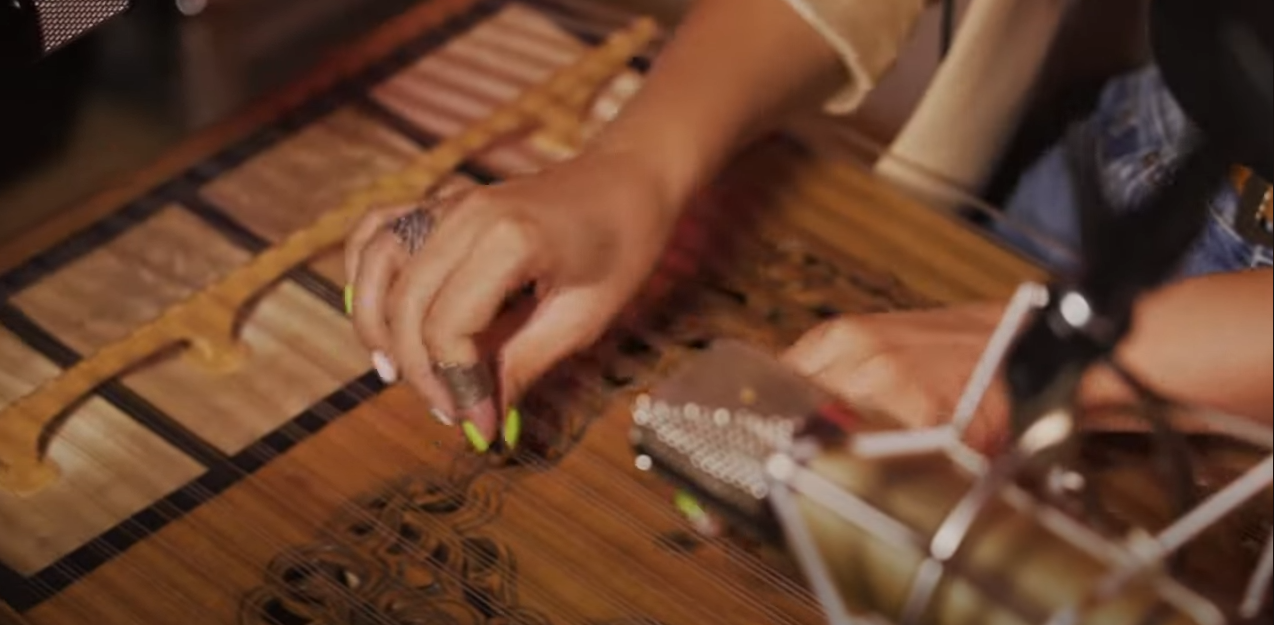
Though most can agree that the name is of Greek origin, nobody agrees on where the first qanun was created, with each society from the Middle East to Central Asia claiming their own variant as the original. Which was the first – who can say? But we can tell you that Armenians have had their own interesting variant for centuries, and that’s the one we captured as a Kontakt instrument.
Today, the Qanun remains popular in folk music throughout the Middle East and the Southern Caucasus, as well as in spirituals, concertos, mugham improvisations, and even jazz.
The Armenian Qanun
Many Armenians transliterate the qanun as “kanon”, even though they frequently view their own version as being entirely unrelated. And it is partly true, Armenian Qanuns are quite different from their Turkish and Arab cousins. “The Qanun in the countries of the Gulf, Central Asia, and Turkey have many more levers that allow them to play more notes,” Mayranush Rubenyan, the woman playing the instrument for our sampling, explains. “The Armenian Qanun only has two levers to perform the flats and sharps of a given note.” Another distinction is that women now make up the majority of Qanun players in Armenia, and they use all 10 fingers in contrast to men, who typically only use their two index fingers.
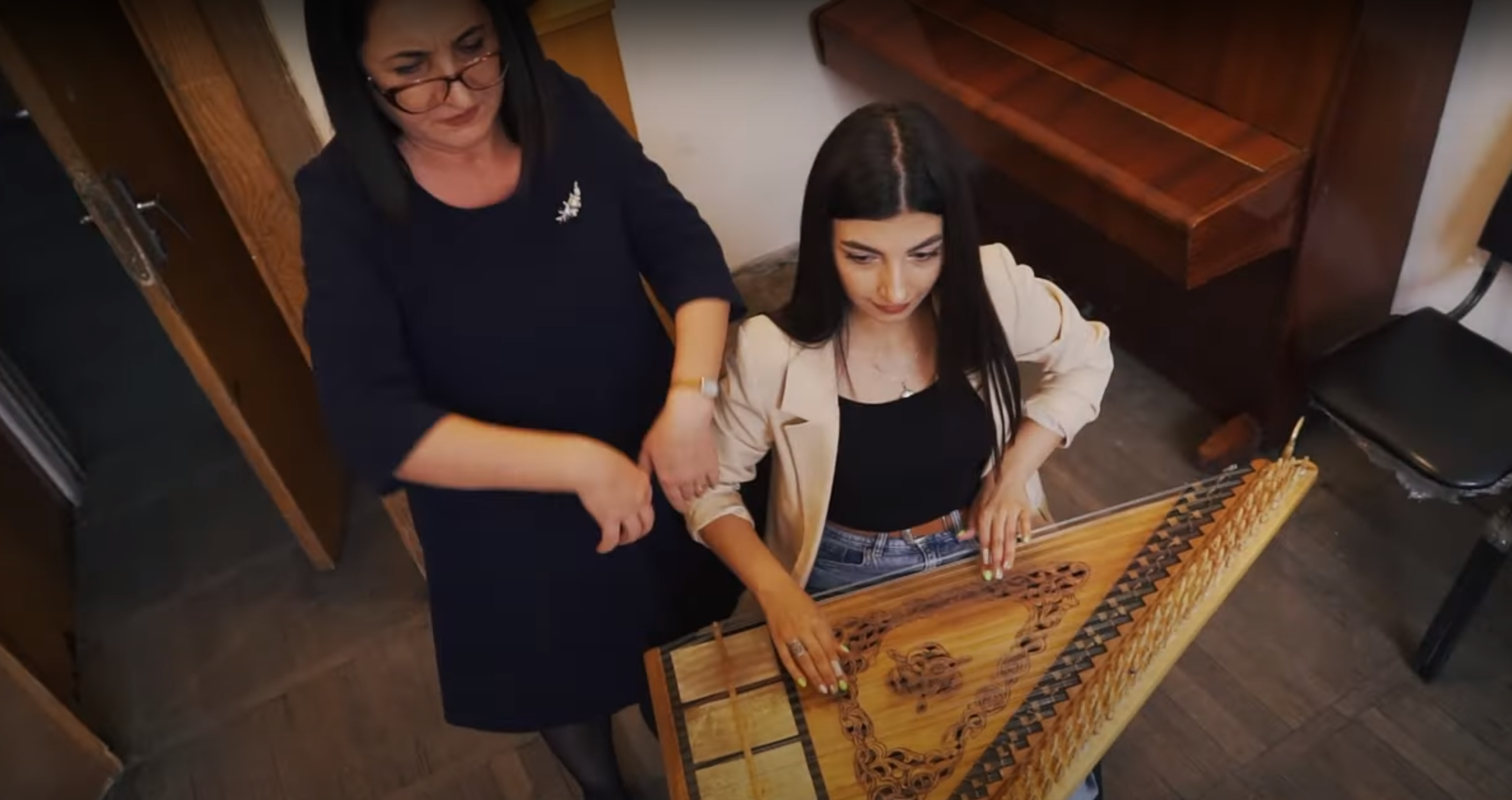
“When the Qanun was first introduced to Armenia from the Kingdom of Cilicia,” Tsovinar adds, “it had up to 16 levers that allowed for the performance of semitones, quarter tones, all the way up to sixteenth tones. Armenians got rid of these levers to allow for the diatonic tuning of the instrument, extending the musical genres applicable to it, including Armenian folk and spiritual music, European classical music, and even jazz.”
The Craftsman
We spoke with Valeri Nerkararyan, a luthier from Lejan, Armenia currently residing in the capital Yerevan, who has been crafting Qanuns since 1994. He taught us a bit about their construction and distinctive qualities. The Qanun’s soundboard is made of walnut, the body of lime, and the base is beech. When Mayranush plays on the 26 notes of her Qanun, she uses the traditional silver thimbles with picks of bull horns at her fingertips. These allow her to play at a louder volume, perfect for playing in an ensemble.
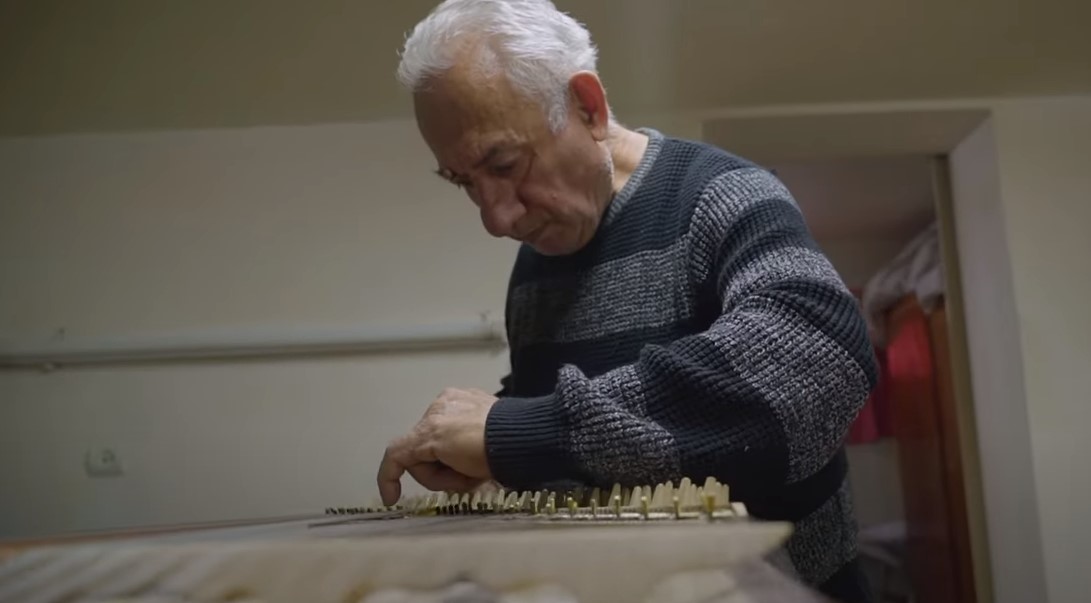
Valeri makes a few variations of the Armenian Qanun, which remains in good demand within the country. When he crafts an instrument, it normally takes about two months. “The most difficult part of the process after the stretching of the strings is tuning the instrument, which takes 10-15 days,” he says. The soundboards all feature the same design elements, yet “no two Qanuns I make are the same,” says Nerkararyan. “Even if the design elements are the same, they’re always arranged differently. Making each Qanun unique confers a sense of serenity. Churches are ever-present to demonstrate the Armenian origin of the instrument. I also often include pomegranates and grapes, two more symbols typically associated with Armenia.”
“I love everything about the Qanun,” says Valeri, “from the first note to the last! The Qanun has a bright future because of its popularity among the youth in Armenia, with a growing number of music ensembles that include the Qanun among their ranks. Any nation that preserves its instruments is bound to live forever.”
Features of Folk Noir: Qanun
When we recorded the instrument, we kept the sound in mind regarding the articulations. We’ve included the standard sustains, shorts, and trills. The trills are in a couple of different lengths, which are standard playing techniques for the Qanun. But Olajide also came up with the idea of doing vibratos and clusters. That adds a twist to the normal field of play. “As a modern company geared towards composers,” Olajide says, “we took it to the next level by incorporating vibratos where the levers of the Qanun were manually manipulated, as well as clusters where the instrument was detuned to extend the use case of the instrument beyond the traditional.”
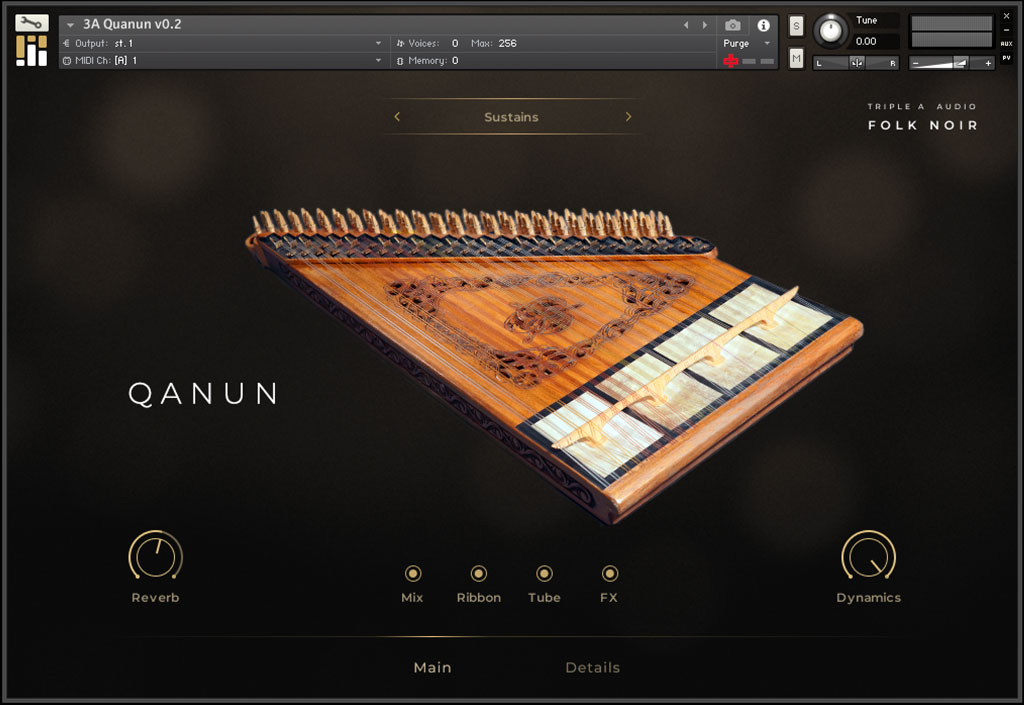
“Clusters we thought were really important,” Olajide continues, “because my intro into sampling was from the world of video games and doing things like Dead Rising 4, where you have these really deep articulations for horror music and action. So, it’s always been my habit that when I work with folk instruments that we take that a little bit beyond the traditional, and we have something that’s just a little bit beyond, something a little bit more modern.”
To create the clusters, we had her leave the middle string in tune. Then she would detune the surrounding strings to give a unison effect. “This extends the use case to beyond doing the kind of more traditional regional type of music,” Olajide says. “Composers are going to be able to use this instrument in a variety of contexts.”
Recording
Our Qanun was recorded here at our private studio in Yerevan, Armenia. The room is perfectly dry, allowing composers to have complete control over any applied reverb. That means you can blend it into your virtual ensemble with ease. We captured the sounds with our ribbon and tube mics on both sides of the instrument.
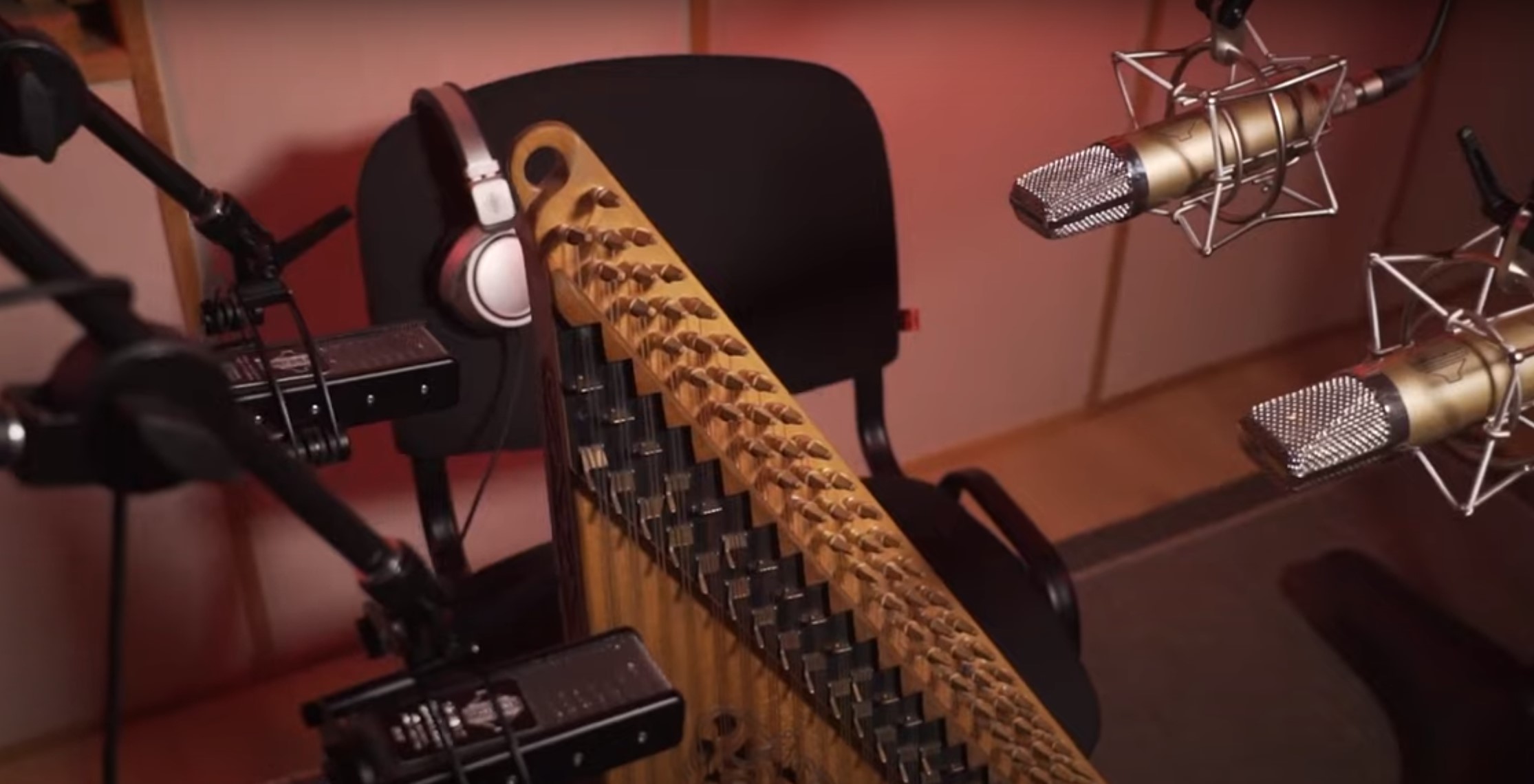
The typical layout of the instrument is that if it’s sitting in front of the musician, it has the low strings closer to the musician and the higher strings further away. “In order to capture that,” Olajide explains, “we do kind of the same way that you would with a piano, a mic over the bass strings and a mic over the mid and treble strings, which allows us to have an equal balance on all of the notes.”
Folk Noir
Since this is our first instrument under the Folk Noir product line, it’s worth mentioning what that means. With the Folk Noir instruments, we’re departing completely from the traditional “Western” set of orchestral instruments. Many in this line can serve as a kind of analog and can be swapped out, or they can be used to add a novel and curious flair that no other orchestra might contain.
Part of the purpose is to introduce these instruments to an audience that might not otherwise know about them. Today we’re bring you the Armenian Qanun. And in a few months we’ll present Circassian instruments we discovered and recorded in Tbilisi, Georgia. Each instrument is a journey across the world. A wonder for us in its beauty and story. Excellent tools for you as a composer to further your sonic toolset.
Get it today
The Qanun is not just another instrument in the world of music. Its unique sound and cultural significance make it a valuable addition to any musician’s collection. Whether you’re a seasoned musician or just starting out, the Folk Noir: Qanun is worth exploring.

